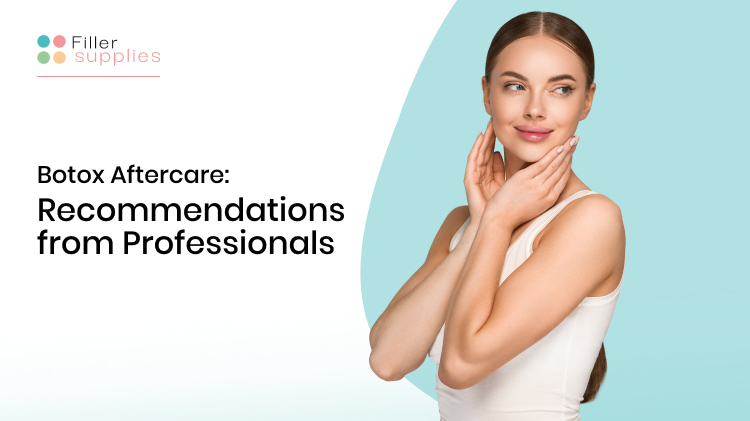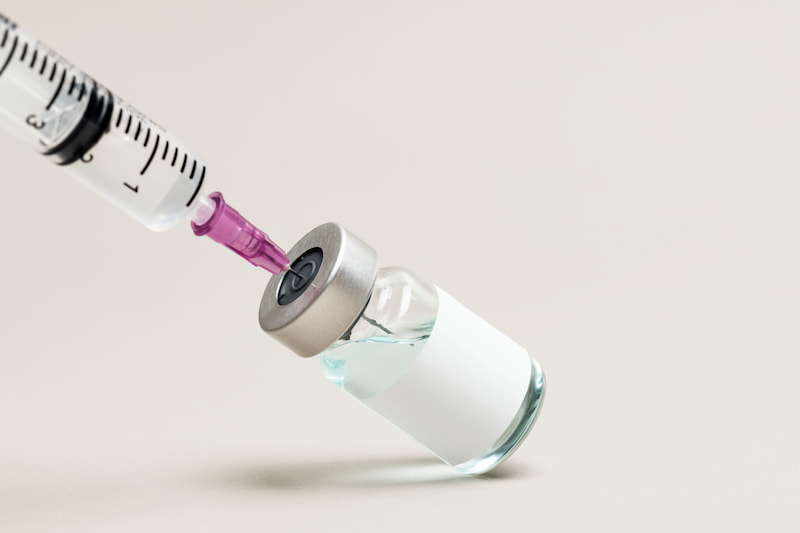Botox Aftercare: Recommendations from Professionals

Having Botox administered is one of the most common ways to get rid of wrinkles and boost one’s looks. By using this product, people can enhance their appearance, postpone aging signs occurrence, and even smooth out already present imperfections. It also can help with excessive sweating, chronic migraines, and other muscle spasm-related conditions. However, a doctor’s experience is not the only thing that matters when it comes to beneficial results; following Botox aftercare instructions is also an important step in this exciting process. Thus, today we decided to dedicate this article to this topic, as sometimes it’s useful to remind people about all the essential rules on how to have a positive experience in the doctor’s office. So, send it to your patients as a kind reminder, and refresh some essentials in your memory as well!
How to Make the Experience Safe and Pleasant for a Patient?
Aftercare is crucial when it comes to botulinum toxin injections, it’s true. However, there are a few things that you, as a medical specialist, can do to ensure all risks are reduced for a person to have the best experience with you. We recommend remembering these few simple things:
- Always use high-quality Botox injections. The quality of the product is a vital thing for a successful session. Plenty of scammers out there trying to sell you out-of-date or spoiled botulinum toxins, and you, as a doctor, must be very careful when choosing your supplier. Thinking about how much is Botox to buy wholesale is important, but the reliability of the company is a crucial factor, too. Consider all the risks, check the reviews, and don’t order too many Boxes unless you are sure you are working with professionals (such as FillerSupplies);
- Ensure you are qualified to perform the session. Botox and cosmetic fillers differ in their natures, so you must know the difference, understand the administration peculiarities, and have a perfect knowledge of the facial anatomy to inject the product into suitable spots. For example, while dermal fillers are meant for subcutaneous injections, a Botox injection would be considered wasted if administered in the same way. All because botulinum toxins are muscle relaxants, so they must be injected directly into facial muscles;
- Prepare all the items for the procedure in advance. Ensure the solution in the vial is not cold, pick up sterile needles, and apply a numbing cream to the target area to eliminate unpleasant sensation from the needle puncture. A customer will definitely appreciate such a well-planned approach and will return for a touch-up treatment.
Planning and safety are two main components in the positive experience formula. Also, we’d highly recommend talking to a customer on a pre-treatment consultation. There, they can mention all the goals, fears, and health peculiarities to create a unique injection session plan according to their needs.
What to Do After Botox in the Clinic
Botox treatment is a fast procedure that doesn’t take a long time. Typically, preparation and session should take no more than thirty minutes, an hour maximum. Before the administration, the target zone is carefully cleaned and disinfected; afterward, the solution is released into the previously defined spots in a series of small infusions. Massaging the face to reduce the chances of Botox spreading to the closest areas and numbing them is not recommended.
Sometimes, medical professionals ask their clients to sit in a clinic for a bit (around 30 minutes) to see whether any allergic reactions or other side effects occur. If not, a person may continue their daily plans without worrying. It’s also important to discuss all potential complications, Botox aftercare, and some other essentials that may be useful at home. Below, we are going to dive deeper into this topic.
Home-Based Aftercare Recommendations
Botox injections, just like any other skin treatments, can make the skin super sensitive for some time, so it requires a special pamper session after the doctor’s appointment. Also, there are some recommendations of what to do and what to avoid doing to make the recovery faster and generally easier. Here are some standard pieces of advice people may find helpful:
- Don’t take blood-thinning medications a week before and after the injection session. Adverse reactions like swelling, redness, and bruising are normal for minimally invasive cosmetic injectables. However, blood thinners can worsen these side effects, making them more prominent and long-lasting. So, such products as ibuprofen, aspirin, vitamin E, fish oil, and some herbal extracts shouldn’t be taken for the sake of faster recovery. In case a patient takes prescription medications that don’t work well with Botox, they should communicate it with a doctor to adjust their treatment plan. Also, avoid alcohol, as it has a similar effect to the blood-thinning drugs;
- Avoid overheated places for a few days. Heat exposure increases blood pressure and, as follows, blood flow. That’s why most patients can notice very bad bruising and swelling if they visit the sauna right after the botulinum toxin injection;
- Don’t put excessive pressure on the treated area. As we all know, Botox belongs to muscle relaxants, meaning it can in some way paralyze the region it’s used for. As follows, too much pressure can cause it to spread out, and it’s not really beneficial for the expected aesthetic results. Postpone gua-sha and other facial massages for a few days to let yourself recover properly after the injection session. It’s also better to avoid sleeping on your tummy not to sink face into the pillow;
- Gyms should be paused for a little bit. When we work out, the blood flow in the body increases; as a result, blood pressure and heart rate also increase. That can encourage bruising, swelling, and other unfortunate symptoms patients wouldn’t like to deal with after the treatment. We recommend having a break for at least a day or two to let all the topical adverse reactions disappear properly;
- Stop wearing heavy makeup for a few days. Even though makeup can help people feel better about themselves, it’s still sort of irritating for the skin, especially sensitive ones, recently treated with botulinum toxins. So, it’s better to avoid foundation, powder, and other products that can feel heavy on the skin. It’ll take only a few days, but you’ll surely notice the results.
Should I Call a Doctor? More About Adverse Reactions
Botox treatments are safe and mostly non-problematic, especially if Botox aftercare is used properly afterward. Still, some adverse reactions may still occur after using this product for facial wrinkles reduction in the targeted muscles. We believe it’s crucial to keep people informed about those, as this way, they can plan their routine, stay in touch with a medical professional, and inform them as soon as any complications occur after the treatment session.
Among the most common side effects are local skin irritations, like redness, swelling, bruising, and others, as well as increased skin sensitivity in the target zone. Botox facial treatments involve needles, so there is no chance to avoid irritation. These are typically gone within a day or two, so it’s better to be patient and wait.
As for more severe adverse reactions, people should remember the following:
- Painful sensations in the treated area;
- Allergic reactions, like throat or tongue swelling, trouble breathing, etc.;
- Irregular heartbeat;
- Loss of consciousness;
- Facial numbing;
- And others.
If any of these are noticed, it’s vital to contact a specialist immediately to receive proper medical help if needed. Still, the chances of those occurring are low.
A SIDE NOTE: Are you curious about the comparison between Botox and Rejuran skin boosters, aiming to enhance your understanding of these treatments? Explore our article “Botox vs. Rejuran: Which Skin Booster Is Better?” for valuable insights that can help you make informed decisions about the most suitable option for your skincare needs.
The Bottom Line: What to Do After Getting Botox?
Proper Botox aftercare is crucial to provide a positive experience for an individual. To prevent bruising, swelling, redness, and other unfortunate complications, we highly recommend remembering to avoid drinking alcohol, stop wearing heavy make up, avoid direct sunlight, and always stay in touch with a doctor to inform them about any complications immediately. With this formula, the improvement will be noticeable in no time, so share this article with your patients to remind them about all essential rules. That’s it for today’s article, thank you for visiting our blog!

